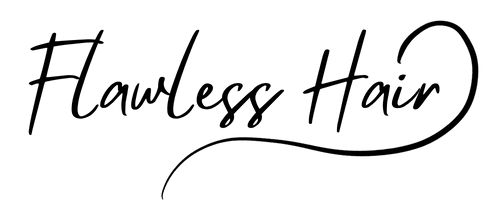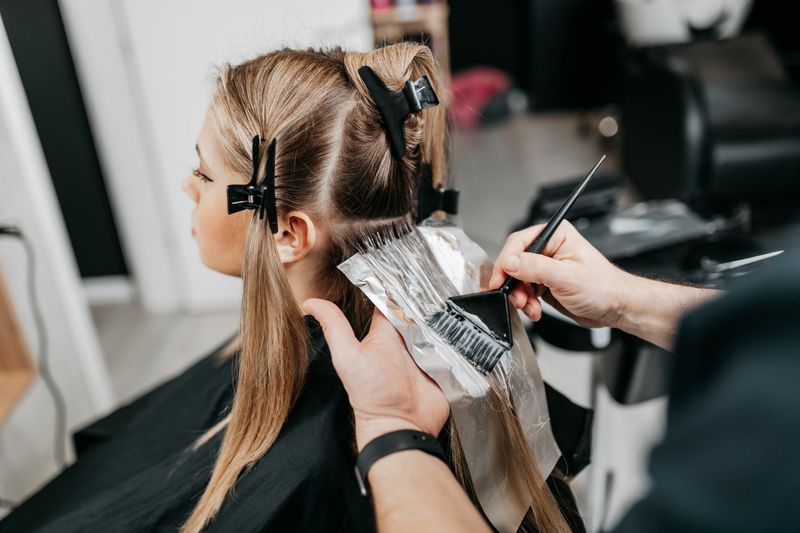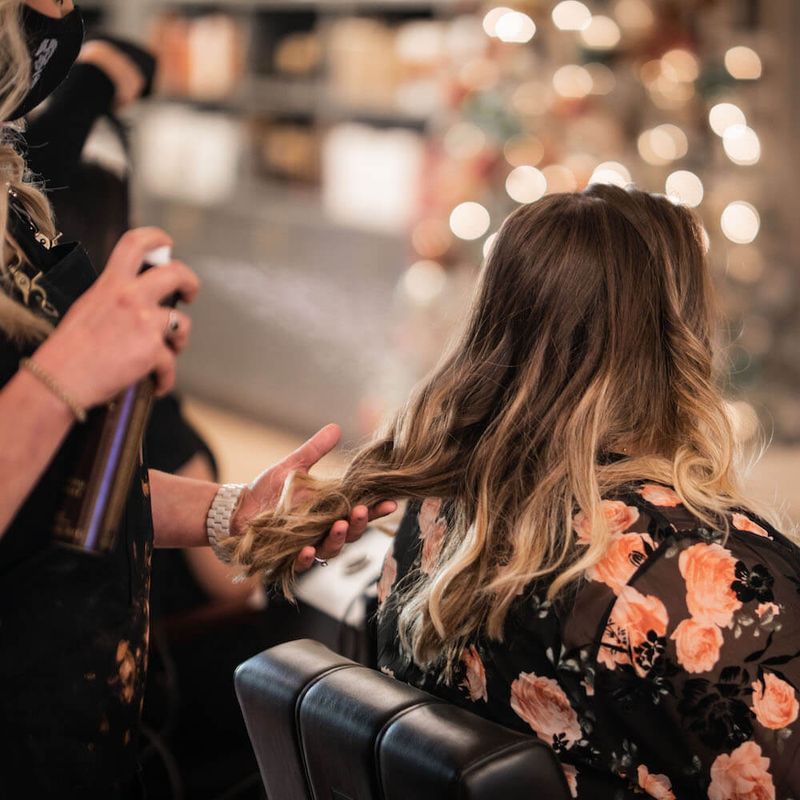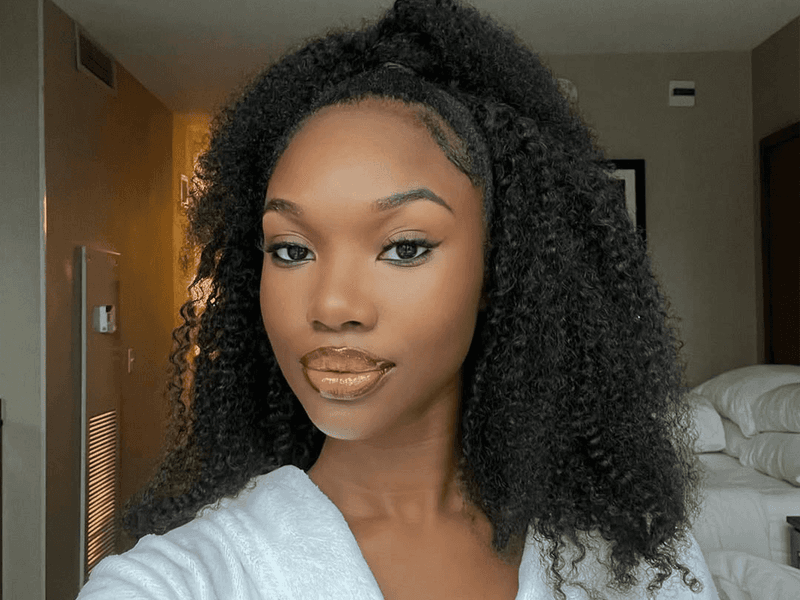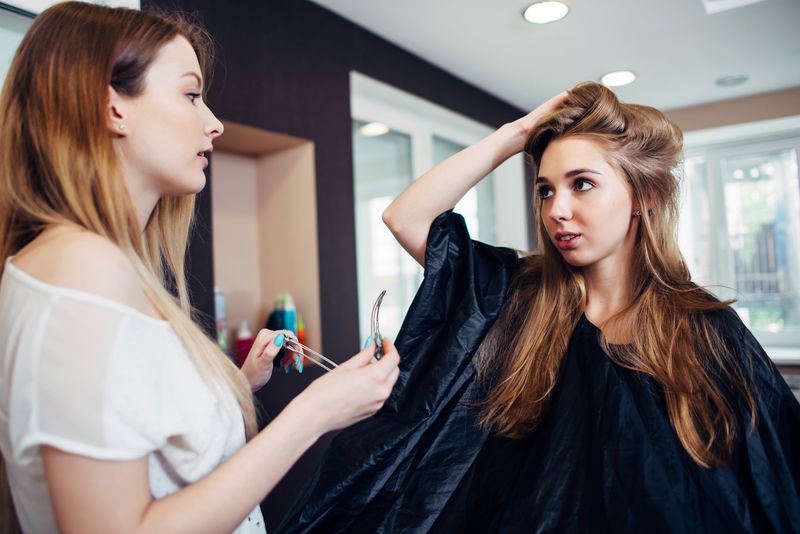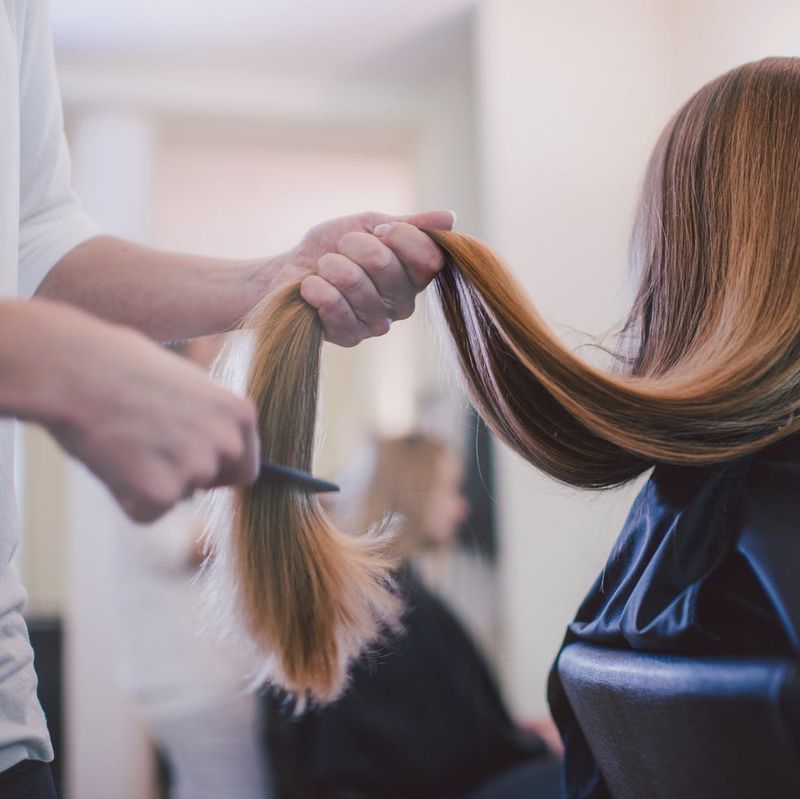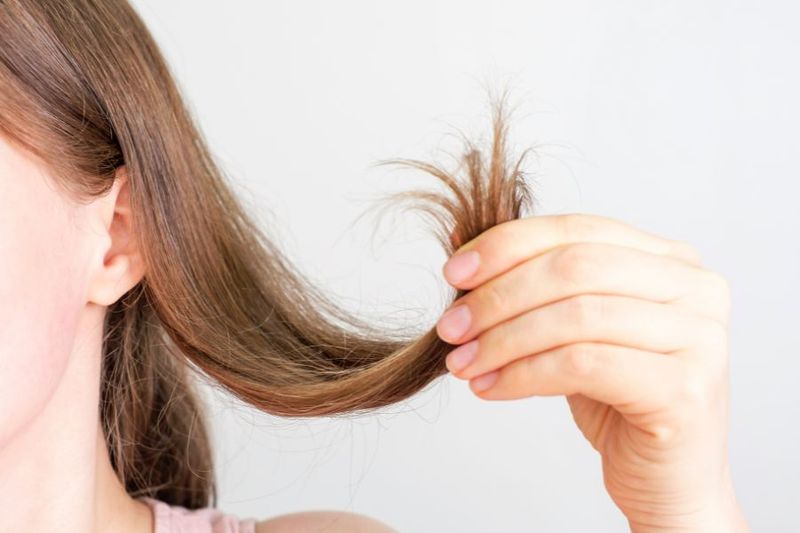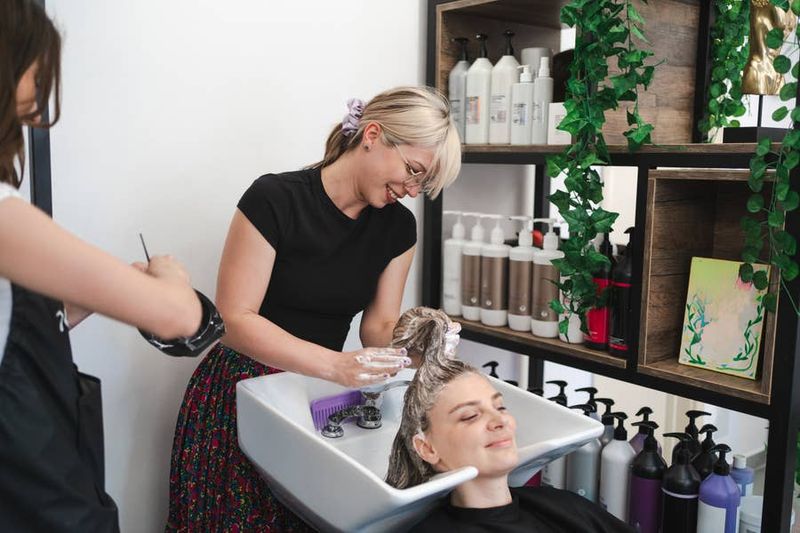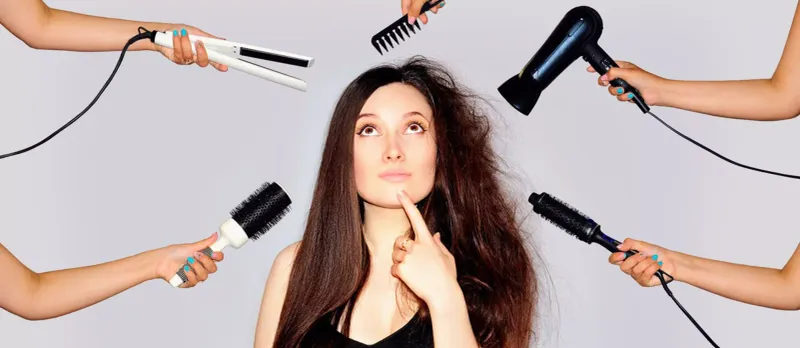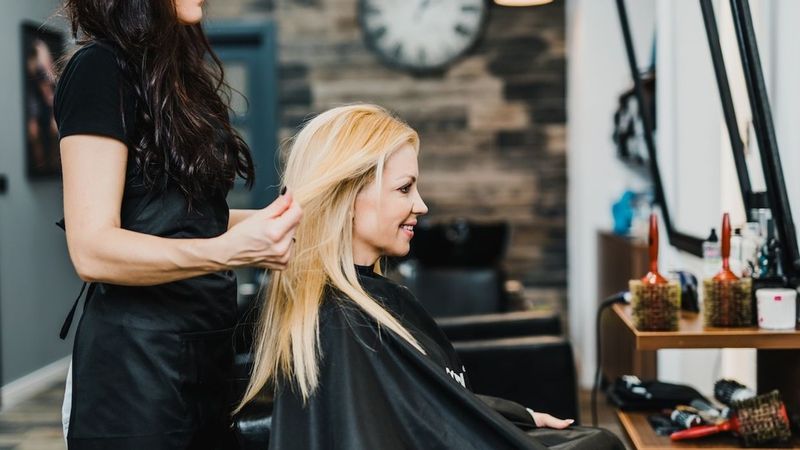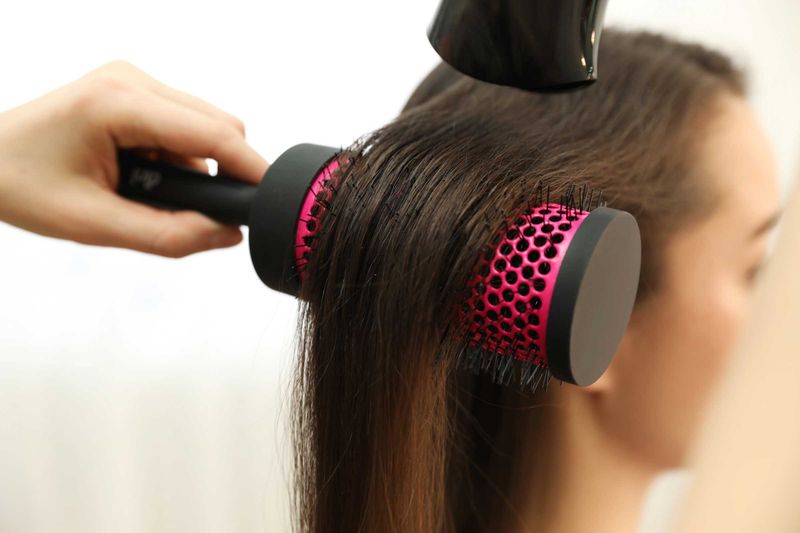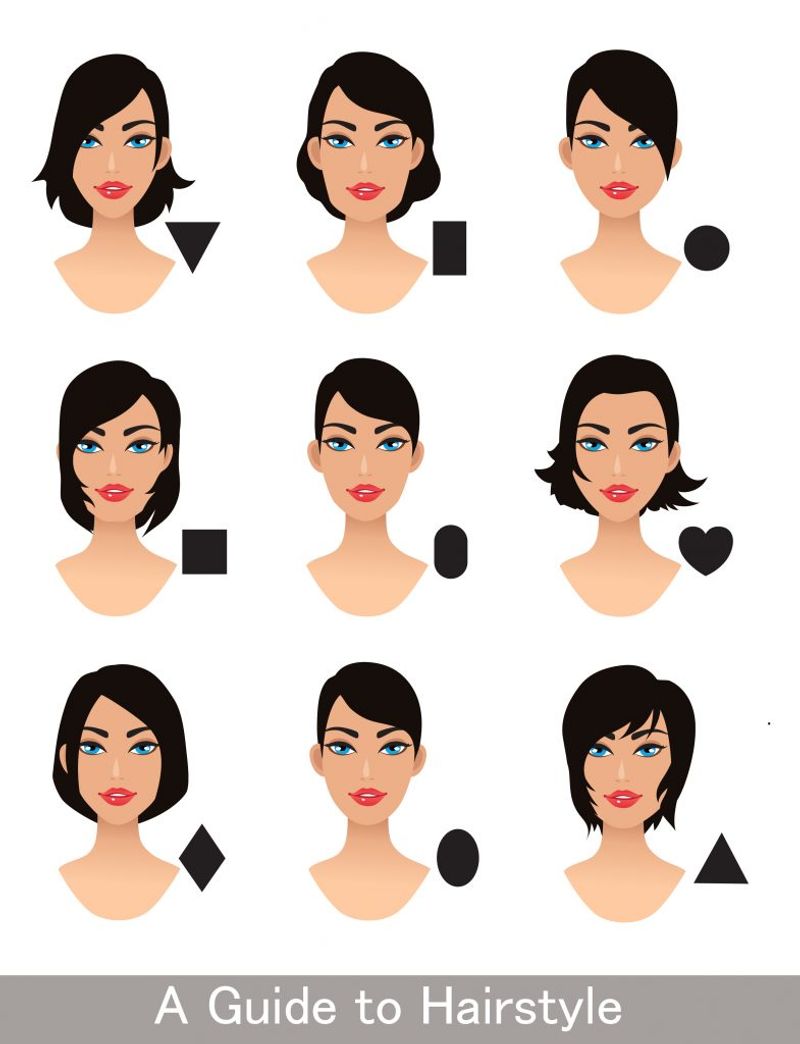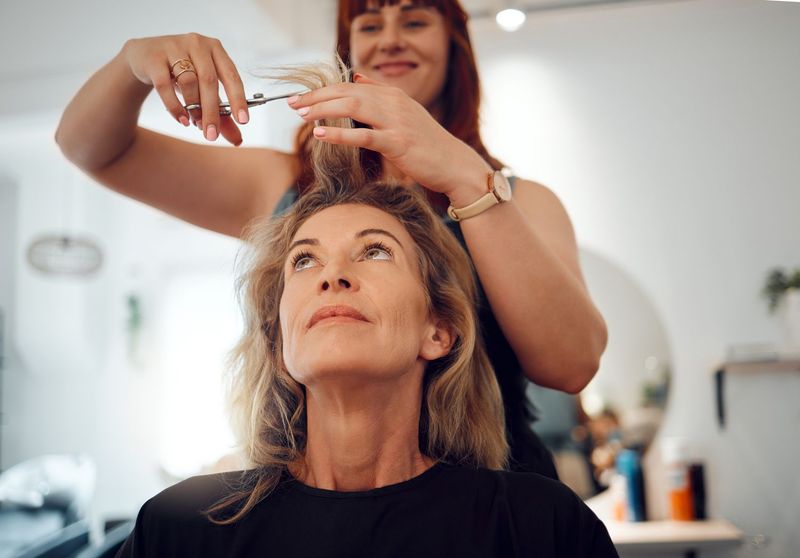Walking into a salon is like stepping onto a silent stage where your hairstylist reads more than just your hair. Professional stylists develop an eagle eye for details that speak volumes about your lifestyle, personality, and hair habits. Beyond the small talk, they’re noticing subtle clues that help them deliver the perfect cut, color, and style for you – even before you explain what you want.
1. Your Natural Hair Texture
Hairstylists can spot your true hair texture the moment you sit in their chair. Those natural waves you try to straighten away? The cowlick you battle every morning? They see it all.
Years of training have taught them to recognize whether your hair naturally curls, waves, or grows stick-straight. This knowledge helps them determine which cuts will work with your texture rather than against it.
Related: -7 Straight-Hair Problems No One Talks About And 8 Easy Fixes That Shine
Many clients fight their natural pattern daily, but your stylist immediately knows if you’re working too hard. They can suggest styles that embrace rather than combat what nature gave you, saving you time and frustration in your daily routine.
2. Previous Color Treatments
Those box-dye adventures you had last month? Your stylist spots them immediately. The telltale signs of at-home color—uneven application, banding, or that distinctive box-dye shine—are as clear as day to a trained professional.
Experienced colorists can identify not just recent color jobs but layers of color history living in your strands. They notice the subtle demarcation lines where different colors meet or where your natural shade is fighting to show through.
This detective work isn’t about judgment but about understanding what chemical processes your hair has already endured. It helps them determine what treatments your hair can safely handle next without causing damage.
3. Your Hair’s Health Status
Split ends, breakage, and dryness tell your stylist a story about your hair’s overall health. The moment they touch your strands, they can feel if your hair is protein-starved, moisture-depleted, or damaged from heat styling.
Healthy hair has a distinctive bounce, shine, and elasticity that damaged hair lacks. When your stylist runs their fingers through your locks, they’re conducting a tactile assessment that reveals months of hair habits.
Many clients are surprised when stylists accurately guess their styling routines. That distinctive kind of breakage around your crown? It reveals your daily high ponytail habit. The dryness at your ends? It shows you’re overdue for regular trims.
4. Your Styling Routine
Your daily styling habits leave evidence that your hairstylist can read like an open book. The telltale creases from always parting your hair the same way or the heat damage pattern that reveals your curling iron technique—nothing escapes their notice.
Flat iron enthusiasts often show distinctive straightening patterns and damage at specific sections. Curly-haired clients who regularly blow out their hair develop particular texture changes where heat is most frequently applied.
Your stylist isn’t judging these habits—they’re gathering crucial information. Understanding your routine helps them recommend cuts that work with your styling preferences and products that might better protect your hair from your daily regimen.
5. Your Confidence Level
Body language speaks volumes in a salon chair. The way you sit, whether you make eye contact in the mirror, and how you describe what you want all signal your confidence level to your stylist.
Clients who nervously play with their hair or speak tentatively about changes often need more reassurance and conservative approaches. Those who sit tall and speak decisively about dramatic changes typically have the confidence to carry bolder styles.
Great stylists adjust their communication style accordingly, offering more guidance and options to hesitant clients while confirming boundaries with confident ones. This silent assessment helps create a comfortable experience tailored to your emotional needs as well as your hair goals.
6. How Well You Follow Hair Care Advice
Stylists can immediately tell if you’ve been following their previous advice about hair care. The client who nodded enthusiastically about using heat protectant but returns with fresh heat damage isn’t fooling anyone.
Your hair reveals whether you’ve been using the recommended products or sticking with your old favorites. That specialized shampoo they suggested for your color-treated hair? They can tell if you’ve been using it by how well your color has maintained.
Most stylists understand that not everyone follows every recommendation perfectly. They’re not tallying up your failures but gathering information about what realistic care routine might work better for your lifestyle and commitment level.
7. Your Stress Levels
Hair tells tales of your stress levels that you might not even realize. Excess shedding, sudden changes in texture, or new patches of gray can all be physical manifestations of stress that your stylist notices immediately.
Chronically stressed clients often develop tension patterns in how they hold their head and neck. Some unconsciously twist or pull at their hair when anxious, creating specific damage patterns that experienced stylists recognize.
Far from being merely cosmetic observations, these signs sometimes prompt caring stylists to check in on your wellbeing. Many have gently suggested stress-management techniques alongside hair care advice, recognizing that healthy hair often reflects a balanced lifestyle.
8. Your Product Preferences
Product buildup tells your stylist exactly what you’ve been putting on your hair. That distinctive silicone slickness or the telltale residue of heavy waxes and gels are immediately apparent to their trained touch.
Even your scent gives you away. Most professional lines have signature fragrances, so when you claim to use the products they recommended last time, they can often tell by smell alone whether that’s true.
Stylists notice when clients with fine hair use heavy products that weigh strands down, or when those with curly hair choose drying formulas that fight their natural texture. These observations help them suggest alternatives that might better suit your specific needs and hair type.
9. Your Lifestyle Habits
Active swimmers are instantly recognizable by the greenish tint chlorine leaves on blonde hair. Frequent gym-goers often show specific breakage patterns from tight workout ponytails.
Outdoor enthusiasts typically display more sun damage on the top layers of their hair, while those who work night shifts or spend limited time outside might show less environmental damage overall. Even diet shows up in hair health—protein deficiencies create distinctive texture changes that experienced stylists can spot.
These lifestyle clues help your stylist recommend maintenance schedules and protective products tailored to your specific activities. A swimmer needs different care advice than someone whose hair’s primary challenge is office air conditioning.
10. How You Really Feel About Your Current Style
Your hands reveal truths your words might not. Constantly pushing hair off your face, tucking strands behind your ears, or playing with your lengths tells your stylist you’re not completely satisfied with your current cut.
Clients truly happy with their style typically touch their hair differently—more to show it off than to adjust or hide it. When you say “I love my hair” but keep trying to make your bangs disappear, your body language contradicts your words.
Observant stylists use these nonverbal cues to ask better questions about what’s working and what isn’t. They might notice you’re constantly fighting your part or struggling with a particular section, leading them to suggest modifications that address the real issues.
11. Your Morning Routine Time Investment
Stylists can immediately gauge how much time you’re willing to invest in daily styling. The client requesting beach waves who shows up with unbrushed hair and mentions being perpetually late is sending mixed messages about their styling commitment.
Polished, complex styles require time and skill to maintain. When clients with elaborate Pinterest inspiration photos arrive with hair that shows minimal daily care, experienced stylists recognize the disconnect.
Great hairstylists use these observations to have honest conversations about maintenance reality. They might suggest modified versions of desired styles that match your actual morning routine, ensuring you leave with a look you’ll love both in the salon and in real life.
12. Your Face Shape and Features
Professional stylists develop an expert eye for facial proportions and how hair can enhance or detract from your natural features. Within seconds of meeting you, they’ve mentally cataloged your face shape, feature placement, and which styles might best complement them.
They notice if your current cut emphasizes features you might prefer to downplay, or if it fails to highlight your best attributes. This assessment happens automatically, even before consultation begins.
When stylists suggest modifications to your requested style, it’s often based on these observations. The slight angle they recommend for your bob or the specific placement of your layers isn’t random—it’s precisely calculated to frame your unique features in the most flattering way possible.
13. Your Honesty About Hair History
Hair keeps chemical receipts that never lie. When clients claim they’ve never colored their hair but have obvious color demarcation lines, or insist they rarely use heat while showing classic heat damage patterns, stylists notice the discrepancy immediately.
These white lies aren’t just transparent—they can be dangerous. Chemical services require complete honesty about hair history to prevent disastrous reactions or unexpected results.
Experienced stylists develop tactful ways to address these inconsistencies without embarrassing clients. They might say, “I notice some previous color here we should work with” rather than calling out the contradiction directly. This diplomatic approach keeps the relationship positive while ensuring proper treatment.
14. Your Comfort With Change
Some clients bring dramatic haircut photos but clutch their chest when an inch gets trimmed. Others claim to want “just a trim” but seem disappointed with conservative results. Your stylist notices these reactions and adjusts accordingly.
Physical cues like white knuckles gripping the chair arms during a cut or eyes that widen in panic at the first snip reveal your true comfort with change. Experienced stylists watch these reactions carefully throughout your appointment.
When a stylist suddenly starts showing you the cut from multiple angles or repeatedly confirms you’re happy, they might be responding to unconscious signals of distress they’ve detected. This awareness helps them pace changes and ensure you leave feeling confident rather than shocked.
15. Your Personality Through Hair Choices
Bold color choices or avant-garde cuts reveal a client comfortable with attention, while those who prefer natural, low-maintenance styles often value practicality over statements. These preferences offer stylists insight into your personality before you’ve shared a word about yourself.
Clients who bring extremely specific, measurement-based requests typically show perfectionist tendencies in other areas too. Those who say “do whatever you think” might either be exceptionally trusting or avoiding making decisions.
Smart stylists use these personality insights to tailor their approach. They might offer precise, detailed explanations to analytical clients while providing more emotional, big-picture descriptions to intuitive types. This personality-matched communication helps build trust and ensures satisfaction.
